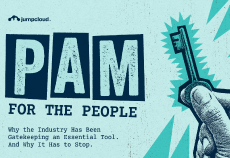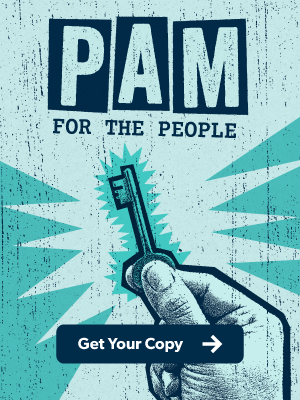Protecting privileged accounts is crucial for a company’s safety. These are the most valuable targets for attackers. When a hacker gets into one of these accounts, they can take over the entire network. To stay safe, you need to understand how multi-factor authentication (MFA) and other security tools protect these accounts.
This guide explains how security tools work together to protect high-level accounts. You’ll learn how they create a strong defense against attacks.
Definition and Core Concepts
- Privileged Access: The ability to perform administrative tasks on important systems, like servers, databases, or network devices.
- Privileged Accounts: A user account with special rights beyond what a normal user has. Examples include a network administrator’s account or a “root” account on a Linux server. These accounts can change system settings, access private files, and manage other users.
- The Attack Surface: Privileged accounts are a tempting target. If an attacker compromises just one, they can move through the network, steal data, and take complete control of the company’s systems. Hackers often try to steal passwords, guess them, or use social engineering to get these accounts.
How Multi-Factor Authentication Works for Privileged Access
Fundamental Mechanism
MFA requires a user to provide two or more ways to prove their identity. For a privileged account, this is a critical layer of defense. Even if a hacker steals a password, they still need more information to get in.
Authentication Factors
MFA uses three types of factors:
- Something you know: A password or PIN.
- Something you have: A physical device like a special key or a cell phone that gets a code.
- Something you are: A biometric trait like a fingerprint or a face scan.
MFA vs. 2FA
MFA uses two or more factors. 2FA uses exactly two. For very important accounts, companies often use true MFA with three or more factors.
For privileged accounts, the process is:
- The user enters their username and password.
- The system asks for more information.
- The user provides the extra information (like a code from a token or a fingerprint).
- The system checks all the information before granting access.
Application to Privileged Access
For privileged accounts, MFA enforcement typically requires stronger factor combinations than standard user accounts. A domain administrator might need a physical FIDO2 security key plus a password to access domain controllers. Database administrators might require a smart card, PIN, and biometric scan for production database access.
The privileged login flow with MFA follows this process:
- User enters username and password
- System prompts for additional authentication factors
- User provides required factors (hardware token, biometric, etc.)
- System validates all factors before granting access
- Session is established with appropriate permissions
Other Key Controls and Mechanisms
- Privileged Access Management (PAM): PAM systems manage, monitor, and audit privileged accounts from a central place. They store passwords in secure vaults, change them automatically, and record everything a user does in a session.
- Just-in-Time (JIT) Access: JIT gives a user special rights only when they need them and for a limited time. For example, a network engineer might get administrator access for just two hours to fix a problem.
- Least Privilege: This rule says that users should only have the minimum access they need to do their job. This limits the damage a hacker can do if they get into an account.
- Session Monitoring and Recording: This records everything a user with high-level access does. It’s used for audits and to investigate security incidents.
- Role-Based Access Control (RBAC): RBAC groups permissions by job function. Instead of giving a user specific rights, you assign them to a role like “Database Administrator” which already has a set of permissions.
- Secure Admin Workstations (SAWs): SAWs are dedicated computers used only for administrative tasks. They are separate from a normal computer and have extra security to prevent hackers from stealing credentials.
Key Features and Components
- Authentication Policies: These rules decide which login methods are needed for different systems. For example, a rule might require a physical key to log in to the most important servers. But it might only require a phone app to log in to a less important one. This means the rules change based on how sensitive a system is.
- Risk-Based Authentication: This is a smart security system. It changes the login steps based on the situation. For instance, if an administrator tries to log in from a new or strange location, the system might ask for more verification. But if they’re on a trusted network, it might ask for the usual login steps.
- Vaulting and Credential Rotation: Vaulting systems are like secure safes for passwords. They store all high-level passwords in one protected place. These systems also automatically change the passwords on a regular basis. This way, if a hacker steals a password, it won’t work for long.
Use Cases and Applications
Protecting Domain Controllers
Domain controllers require the strongest protection due to their critical role in Active Directory environments. MFA for Domain Admin accounts typically involves hardware security keys combined with passwords. PAM solutions manage these accounts, rotate passwords regularly, and record all administrative sessions.
Securing Cloud Infrastructure
Cloud platforms like AWS, Azure, and Google Cloud need special access controls. Root accounts and admin roles use MFA with hardware tokens. JIT access offers temporary elevation for specific tasks. Cloud-native PAM solutions work with identity providers and support role-based access.
Database and Application Administration
Production databases and critical applications require careful access control. Database administrators use PAM solutions to access systems with temporary credentials, while session recording captures all database queries and administrative commands. Application administrators receive JIT access for deployments and configuration changes.
Advantages and Trade-offs
- Pros:
- Less Risk: MFA makes it much harder for a hacker to get in with a stolen password.
- Accountability: Recording sessions makes it so administrators know their actions are being watched. This helps prevent bad behavior.
- Limits Damage: The least privilege rule makes it so a hacker can’t do much harm even if they compromise an account.
- Cons:
- Complexity: It can be difficult to set up and manage all these security tools.
- User Frustration: If the system is not set up correctly, it can slow down legitimate work and frustrate users.
- Older Systems: Some older computer systems don’t support modern security tools like MFA.
Considerations
Here are some common issues that can happen with privileged account security:
- Lost hardware tokens: If an administrator loses their physical security token, they can’t log in. Companies need to have a backup plan for getting access and a process for replacing the token.
- Bad MFA setup: If the rules for MFA are set up wrong, it can lock out real users or fail to protect important systems. You need to regularly review and test your rules to make sure they’re working as intended.
- SMS is not very secure: Using text messages for authentication is less secure than using a physical token or an app. Attackers can intercept text messages.
- Forgotten accounts: Companies often forget about old administrator accounts or systems that bypass security rules. You need to find and secure all privileged accounts to ensure full protection.
- Complex setup: Installing a PAM system can be difficult. It has to connect to your network, cloud systems, and other programs. Careful planning and testing are needed to prevent problems.
- Phishing and social engineering: MFA doesn’t prevent all attacks. Clever hackers can still trick users into sharing information on fake websites. They can also convince users to approve a login request.
- The need for training: Even with strong security tools, teaching users to spot social engineering is key. Attackers may try to trick users into approving logins or giving access to their devices.
Securing Your Privileged Access
Protecting privileged accounts requires a full-scale plan that includes MFA, PAM, and other controls. MFA is the base, making sure you need more than a password to log in. PAM adds central management and monitoring.
A good security plan takes time to set up. Start with your most important systems and gradually expand your protection. This investment in security pays off by reducing the risk of data breaches and keeping your company’s most important assets safe.






